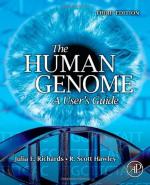|
This section contains 694 words (approx. 3 pages at 300 words per page) |

|
Determining the complete sequence of the human genome is the first step to better understanding the complex intricacies that help explain human evolution, the role of the environment in gene expression and protein function, and disease causation. Analytic techniques that dissect DNA sequences complement functional genomics (the investigation of gene regulation, expression, and interactions with other genes) and proteomics (the study of proteins and protein-protein interactions), two distinct fields that have emerged in the post-genomic era. The development of cytogenetic landmarks, or areas of DNA sequences that are informative based on their uniqueness and arrangement within the genome, are used to assist scientists in genomic analyses.
The BAC Resource Consortium compiled 7,600 cytogenetically distinct landmark clones to aid in the study of gene alterations, particularly those that result in phenotypic abnormalities caused by gross chromosomal aberrations. These cytogenetic landmarks consist of...
|
This section contains 694 words (approx. 3 pages at 300 words per page) |

|


